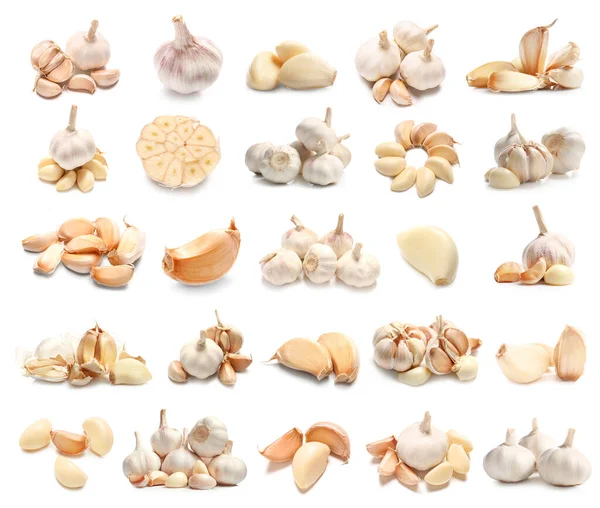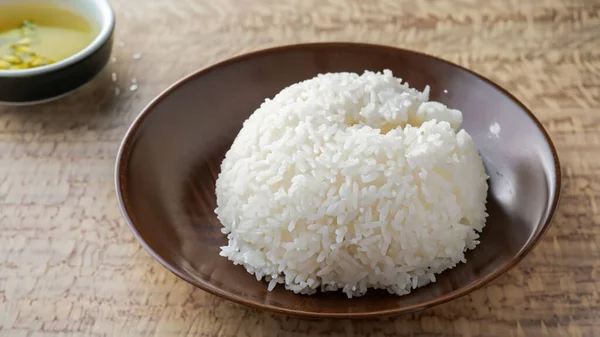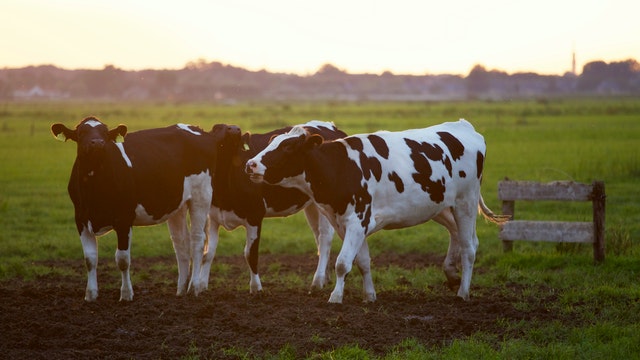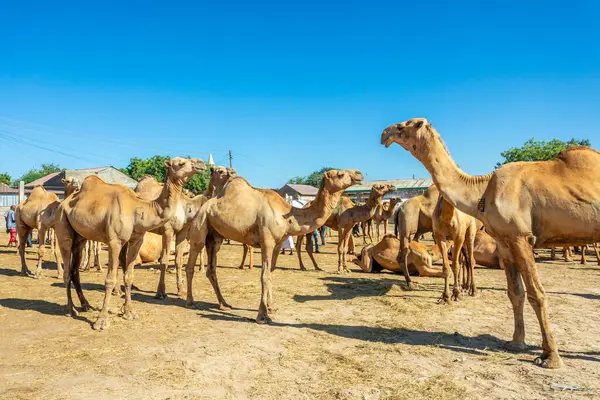Are you looking for the best garlic types to grow in Kenya? In this post, learn the best garlic varieties to grow in Kenya. You will learn about the softneck, hardneck, and elephant cultivars that are suitable for giving you high yields. For your choice, the guide has the maturity period and yield per variety.
Garlic, popularly known as ‘Kitunguu Saumu’ belongs to the onion family. It is a highly profitable horticultural crop. It can give you huge returns given its high demand in the Kenyan and export market. To get the highest yields and income, you need to plant high-quality seed varieties such as Africa Giant, Roja, or the German Extra Hearty.
- How to choose the best garlic seeds?
- Types of Garlic Grown in Kenya
- Softneck Garlic Varieties in Kenya
- Hardneck Garlic Varieties in Kenya
- Elephant garlic variety in Kenya:
- What you should know about wild garlic
- FAQs
How to choose the best garlic seeds?
Garlic is not planted from seeds but rather from individual garlic seed cloves. A farmer should choose a garlic variety that is big in their area. The following are some factors you need to consider for the best choice.
- Yield potential; Choose a garlic seed variety that has the highest yield in your agroecological area.
- Customer preferences; Garlic varieties have different tastes and flavors, ranging from mild to strong. Choose a garlic variety that suits your buyers’ taste and flavor preferences.
- Pest and disease resistance; Choose certified garlic seeds that are free from any disease and pest infections. They will yield a better crop and be easy to grow.
- Agro-ecological Zone; Different garlic varieties thrive under different rainfall, temperature, and humidity. Soil and altitude requirements.
Types of Garlic Grown in Kenya
| Variety | Yield/Acre | Maturity Period |
|---|---|---|
| Africa Giant | 5-8 tons | 90-120 days |
| Arusha Giant | 5-8 tons | 90-120 days |
| Rwanda Giant | 5-8 tons | 90-120 days |
| Germidour | 5-8 tons | 90-110 days |
| Roja | 5-8 tons | 90-120 days |
| German Extra Hearty | 5-8 tons | 90-120 days |
| Elephant Garlic Variety | 3-5 tons | 120-150 days |
Softneck garlic, hardneck garlic, and elephant garlic are the three main types of garlic that do well in Kenya.
Softneck garlic is the most common variety of garlic found in the food market. It features a white, paper-like skin. It is the simplest form of garlic to grow and usually has a sweet pungent odor and a robust taste. Types of soft neck garlic are California Early, California Late, and Creole which thrive best in warm climates.
Read Next: How Profitable is Garlic Farming in Kenya?
Hardneck garlic is the less common type with purple markings. Varieties of hardneck garlic are Roja and German Extra Hearty which produce large and few cloves on the head. They too have a fairly strong taste and a sweet pungent odor. They usually have thinner skin that is easy to remove.
Elephant garlic is not a true garlic but a type of leek. It has a mild flavor and is characterized by its large size and fewer cloves per bulb
Softneck Garlic Varieties in Kenya

Africa giant
Africa Giant is a softneck garlic variety that is commonly grown in Kenya. It has a white to purple color and is known for its high yield and adaptability to different ecological conditions. It is suitable for warm climates and can be grown in areas with low humidity, moderate rainfall, and consistent temperatures throughout the year. Africa giant garlic has a mild, sweet taste and is easy to grow. It takes about 90-120 days to mature, and the yield is about 5-8 tons per acre
Arusha giant
Arusha giant is another softneck garlic variety that is grown in Kenya. It is also known as Moyale Giant and is originally from Ethiopia. It is characterized by its large size and white to purple color. Arusha giant garlic is suitable for warm climates and can be grown in areas with low humidity, moderate rainfall, and consistent temperatures throughout the year. It has a mild, sweet taste and is easy to grow. It takes about 90-120 days to mature, and the yield is about 5-8 tons per acre. Arusha Giant garlic is commonly grown in the rich soils of Kajiado County in Kenya
Rwanda Giant
Rwanda Giant is a softneck garlic variety that is grown in Kenya. It has a white to purple color and is known for its high yield and adaptability to different ecological conditions. It is suitable for warm climates and can be grown in areas with low humidity, moderate rainfall, and consistent temperatures throughout the year.
Rwanda giant garlic has a mild, sweet taste and is easy to grow. It takes about 90-120 days to mature, and the yield is about 5-8 tons per acre. Rwanda Giant garlic is mostly white and is one of the significant spices that make up the onion family
Hardneck Garlic Varieties in Kenya
Germidour

Germidour is a favored garlic variety in Kenya known for its adaptability to a wide range of altitudes, typically from sea level to around 2,000 meters above sea level, making it a versatile choice. It produces large, flavorful bulbs with a mild, sweet taste. On average, you can expect a yield of 5-8 tons per acre, with a maturity period of about 90-110 days.
Related: Which are the best onion varieties in Kenya?
Germidour thrives in well-drained, fertile soil rich in organic matter and requires adequate irrigation. It prefers cool to mild temperatures during the growing season. Germidour garlic is a vigorous variety that grows up to 60cm tall and is early and high-yielding. It is also suitable for organic farming. The garlic variety is susceptible to rust, which is a fungal disease
Roja

Roja is another hardneck garlic variety that is grown in Kenya. Roja garlic is sometimes referred to as Greek or Greek blue garlic. It has a purple color and produces large, flavorful bulbs with a strong taste and a sweet pungent odor. Its bulbs are moderately sized, averaging 5 to 7 centimeters in diameter. Roja garlic has a thinner skin that is easy to remove. It takes about 90-120 days to mature, and the yield is about 5-8 tons per acre
The Roja garlic is a great choice for those who want a garlic variety with a strong taste and a sweet pungent odor. It is easy to peel and has a thinner skin compared to other garlic varieties. On the downside, it is susceptible to rust fungal disease.
German Extra Hearty

German Extra Hearty is a hardneck garlic variety that is grown in Kenya. It is also called German Stiffneck, German White, or Northern White. It produces large, flavorful bulbs with 5-8 large cloves each. It has a strong taste and a sweet pungent odor. German Extra Hearty garlic has a thinner skin that is easy to remove. It takes about 90-120 days to mature, and the yield is about 5-8 tons per acre.
German Extra Hearty garlic is a great choice for those who want a garlic variety that is easy to grow, has a mild flavor, and is suitable for colder climates. It is also an excellent choice for those who want a garlic variety that is easy to peel and has a thinner skin compared to other garlic varieties
Elephant garlic variety in Kenya:
Elephant garlic is not a true garlic but a type of leek. It has a mild flavor and is characterized by its large size and fewer cloves per bulb. Elephant garlic is suitable for warm climates and can be grown in areas with low humidity, moderate rainfall, and consistent temperatures throughout the year. It takes about 120-150 days to mature, and the yield is about 3-5 tons per acre
What you should know about wild garlic
Wild garlic, also known as Allium vineale, is a perennial, bulb-forming species of wild onion. It is native to Europe, northwestern Africa, and the Middle East. It is also considered a noxious weed in Australia and North America. Though it is not commonly grown commercially, it can be found in some specialty food stores and restaurants.
Wild garlic has a strong garlic odor, and all parts of the plant can be used. The underground bulb is 1-2 cm in diameter, with a fibrous outer layer. The main stem grows to 30-120 cm tall, bearing 2-4 leaves and an apical inflorescence 2-5 cm in diameter comprising several small bulbils and none to a few flowers, subtended by a basal bract.
Wild garlic is used as an ingredient in various cuisines, including French, Mediterranean, Spanish, Italian, and Mexican recipes. There are many benefits of eating wild garlic. It is also known for its medicinal properties, including its ability to boost the immune system, reduce the size of tumors, and fight bacterial, fungal, and viral infections. Wild garlic is also used in the prevention of heart conditions and the regulation of hypertension.
FAQs
What is the price of garlic seedlings in Kenya?
On average, a kilo of garlic goes for Ksh. 475 while garlic seeds fetch Ksh. 450 for a similar quantity. The prices of garlic seedlings in Kenya vary depending on the location of the supplier. The price ranges from Ksh. 300 to Ksh. 500 in Nairobi.
Where can you buy the best garlic seeds or seedlings in Kenya?
Are you looking for the best garlic seeds for planting in Kenya? Here are some sources where you can get certified garlic seeds; Garlic Farm Kenya, Greenlife Crop Protection Africa, Amiran Kenya Limited, Kenya Seed Company Limited, and Simlaw Seeds.



